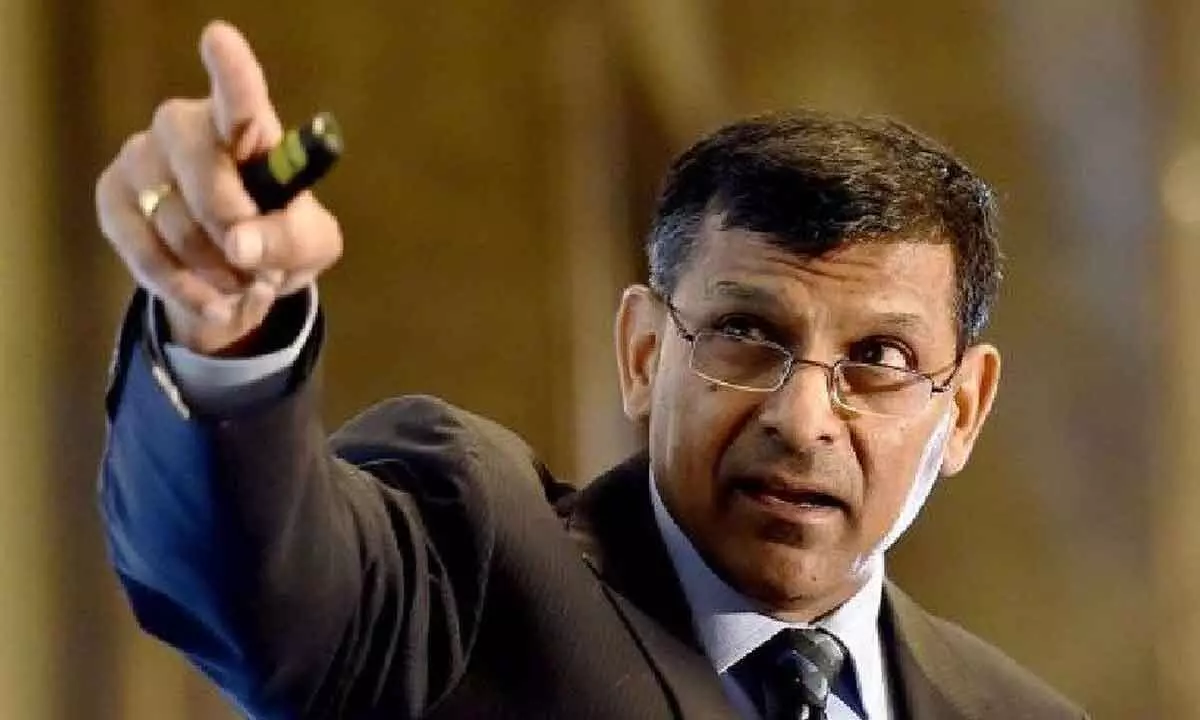The flip side to India's growth story as Rajan sees it
Manufacturing gains can help boost exports and overcome the trade deficit that exists in the country
image for illustrative purpose

Rajan said that India's labour market is not doing well, which is why many people apply for government jobs. He says that manufacturing growth is happening in capital intensive parts and not the labour intensive ones
Former Reserve Bank of India (RBI) Governor Raghuram Rajan says that the country’s real rate of growth could be around 6-6.5% and not 8-8.5%. To become a developed country by 2047, India would need growth rates of 9-10% over a sustained period of time, he opined.
By 2030, India is expected to be the manufacturing hub for the global market with its capacity increasing to $one trillion and $20 trillion by 2047. This also aligns with our need to generate over a 100 million jobs by 2030 with a focus on the manufacturing sector, according to the World Economic Forum (WEF).
We have transitioned from an agro-economy to a service-based economy with a marginal decline in the GDP share by the manufacturing sector. While this trend has increased the opportunities for the educated class, its continued prioritization may impact wider growth opportunities across weaker sections of the population.
The manufacturing sector can ensure uniform growth of skilled, semi-skilled and unskilled citizens to become a part of the workforce and make a contribution to the growth story. Manufacturing gains can help boost the exports and overcome the trade deficit that exists due to high import dependence for mineral oils, electronic components and electrical machinery. India is already treading on the right path, achieving the envious milestone of $400 billion in exports in FY 2022-23, recording 37% massive growth from the previous year.
Technology-led investments will further improve the efficiencies here. A recent WEF report observed that the involvement of the Internet of Things (IoT) in manufacturing helps cost improvement by nearly 43%, with a positive effect on the quality and reduces energy spends by almost 41%.
India is fast progressing towards becoming a major international manufacturing hub.
In this article, I have touched upon some key factors such as technology adoption, government initiatives and infrastructure growth, among others that are enabling this transformation.
Rajan said that India's labour market is not doing well, which is why many people apply for government jobs. He says that manufacturing growth is happening in capital intensive parts and not the labour intensive ones.
"If you look at the labour intensive parts of manufacturing in 12 out of 23 sectors that form the IIP were actually lower in production than in 2016. A lot of the damage was done during the pandemic and you saw a whole bunch of this industry shrink. Why it has not bounced back remains a mystery to me. But there is a potential answer-our demand also has not picked up strongly since the pandemic," he explains.
Citing the example of two-wheeler and four-wheeler sales in India, Rajan further mentioned that post-pandemic, demand has not picked up as strongly as is required.
"Look at the four-wheeler sales. People like us. What they buy, passenger cars, are going through the roof past the pre pandemic levels. Look at two-wheeler sales, which the middle class uses. They have been growing rather slowly in the last decade, but particularly they went up before the pandemic. They haven't reached the pre-pandemic levels. So put all these together, not enough employment," he said.
The International Monetary Fund (IMF) also concedes that jobless growth, though seemingly oxymoronic, is a reality. Following the 2008 US financial crisis which was worse than the great depression of 1930, the economy slowly started climbing back but by pulling up its socks and cutting costs. Inevitably the axe continues to fall on labour. The likes of Amazon and Google mercilessly cut jobs through layoffs, even while growing thanks to automation and online operations.
The gig economy too is confounding matters. Gig workers typically aren’t borne on the rolls of any organisation but nevertheless contribute immensely to the economy and GDP growth.
Cab drivers in India are doing reasonably well thanks to Ola and Uber. Delivery boys of Swiggy and Zomato crisscross the city roads and earn their keep. Carpenters, electricians and plumbers settle for the service charges fixed by app-based service aggregators and share the spoils with them. That way they remain busy throughout the day.
On that count, technology has changed the way we hire our workers and how workers see merit in becoming independent. Indeed, shape up or ship out is what technological innovations spell.
All these things explain the mystery of jobless growth of economies all over the world. Thus, the current Indian unemployment rate of 3.7% is not all that alarming, as simultaneously the gig economy is also taking firm root.

